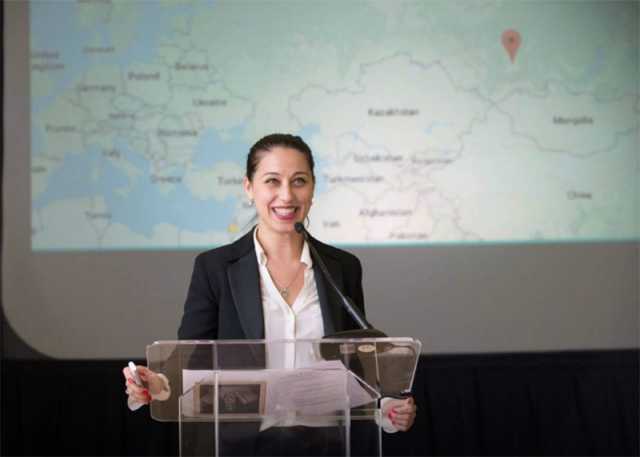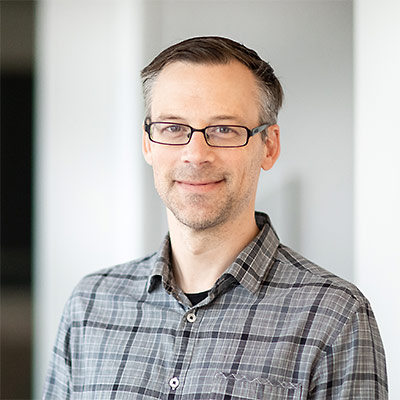University of Toronto course takes a data-science approach to viewing Holocaust testimonies in the Archive

Any individual testimony of a Holocaust survivor tells a story that is personalized and unique.
But a new Jewish Studies class at the University of Toronto is encouraging students to watch USC Shoah Foundation’s testimonies in another way – using applied statistics – to test hypotheses and find broader stories that often aren’t detectible in any single interview.
The aim for the course – called Jews: by the numbers – is to take a quantitative approach to studying the humanities.
The course by Alexis Lerner, a political science PhD candidate, has students attaching codes to testimonies and analyzing patterns. Lerner has also conducted her own research using the similar methods.
Among the preliminary findings:
- the women in the sample group tended to pause more than men when telling their stories
- survivors who fled to America after the war recalled more instances of childhood antisemitic bullying than those who settled in the Soviet Union – even though they all hailed from the same town.
Lerner – whose grandmother, Lillian Fixer, is a Hungarian Holocaust survivor who gave her testimony to USC Shoah Foundation – designed the course for undergrads, who at the University of Toronto are all required to take a quantitative methodology course. The university also happens to have many students majoring in Jewish Studies.
Often, Lerner said, these students gravitate toward the “low-hanging quantitative fruits” – like astronomy or forestry – just to get the requirement out of the way.
“I created this course that used applied statistics and data science to teach these students about the data sets relevant to Jewish studies,” Lerner said.
In addition to the Visual History Archive, the course – which resumes in the fall – explored other archives and data sets, such as the PEW Research Center’s “Portrait of Jewish Americans” (2013) and the Anti-Defamation League’s Global 100 Index on antisemitism (2015).
For the Visual History Archive piece, Lerner had to keep the parameters of the assignment narrow: Her 13 students examined only survivors who spoke English and had lived through the Budapest Ghetto in Hungary.
Students each chose a testimony, which they tagged with codes at 30-second intervals.
For instance, students assigned a number between one and five that characterized the apparent emotion of the survivor, with one being extremely negative, three being neutral and five being extremely positive.
This enabled students to test hypotheses about emotional responses to certain words and concepts that came up during the interview.
One student discovered that survivors outwardly exhibited more positive emotions when discussing Russians than when discussing Germans – a finding that is perhaps unsurprising given how the Soviets liberated Auschwitz and other concentration camps.
Another student found that the women in their study paused significantly more than men when telling their stories. The student defined a pause as one in which the respondent took at least three seconds to answer a question; anything over the three seconds was aggregated. On average, women paused for a total of nearly 23 seconds over the course of the testimony, versus just 1.5 seconds for men.
“I believed that since men and women deal with trauma differently, female interviews would contain more pauses, and that the data would support this assertion,” said the student, Sarah Wapner, in a paper.
Although the data supported her hypothesis, she acknowledged methodological flaws, such as the tiny sample and the inherent difficulty of quantifying emotion.
“What one student classified as a ‘3’ emotion might have been classified as a ‘2’ or ‘4’ by another student,” Wapner wrote.
In her own research, Lerner coded testimonies of 30 adults who all were born in Minsk – the capital of Belarus, which was then a part of the Soviet Union.
Her aim was to compare the memories two groups: those who stayed in the USSR, and those who migrated to the United States after the war.
Even though both groups grew up in the same town, those who immigrated to America remembered more instances of childhood antisemitism.
Lerner speculated that this could be due to the distinctly different ways in which antisemitism manifested itself in the two countries after the war. In the Soviet Union it took a more bureaucratic form – such as the inability for survivors’ children to get into college because they were labeled as Jews on their passports. In the post-war United States, antisemitism was more “interpersonal and societal,” she said.
These survivors were more likely to share memories like: “The kids would bully me on the playground.”
Lerner’s beta study also yielded another interesting observation: The Minsk-born child survivors that stayed in the USSR were more likely to report positive feelings toward Soviet institutions and leaders – such as the Red Army, and even Stalin. Those who moved to the United States often spoke glowingly of America, but also neglected to credit the Red Army that saved them.
“I think nations shape the way people remember their own experiences,” Lerner said, noting that survivors were living in their respective countries for some 50 years before giving their testimonies to USC Shoah Foundation.
“They get married, they go through school systems, they have their first job, they have their kids there – they are socialized,” she said, adding that the people in the group she studied were teenagers when the war ended. “They had a long life of assimilation ahead.”
Lerner is applying for grants to fund the next phase of her research, which will examine the same questions for other subsets of survivors. Meanwhile, she has a dream goal for the class: to code all 55,000 testimonies in the Visual History Archive.
Like this article? Get our e-newsletter.
Be the first to learn about new articles and personal stories like the one you've just read.
